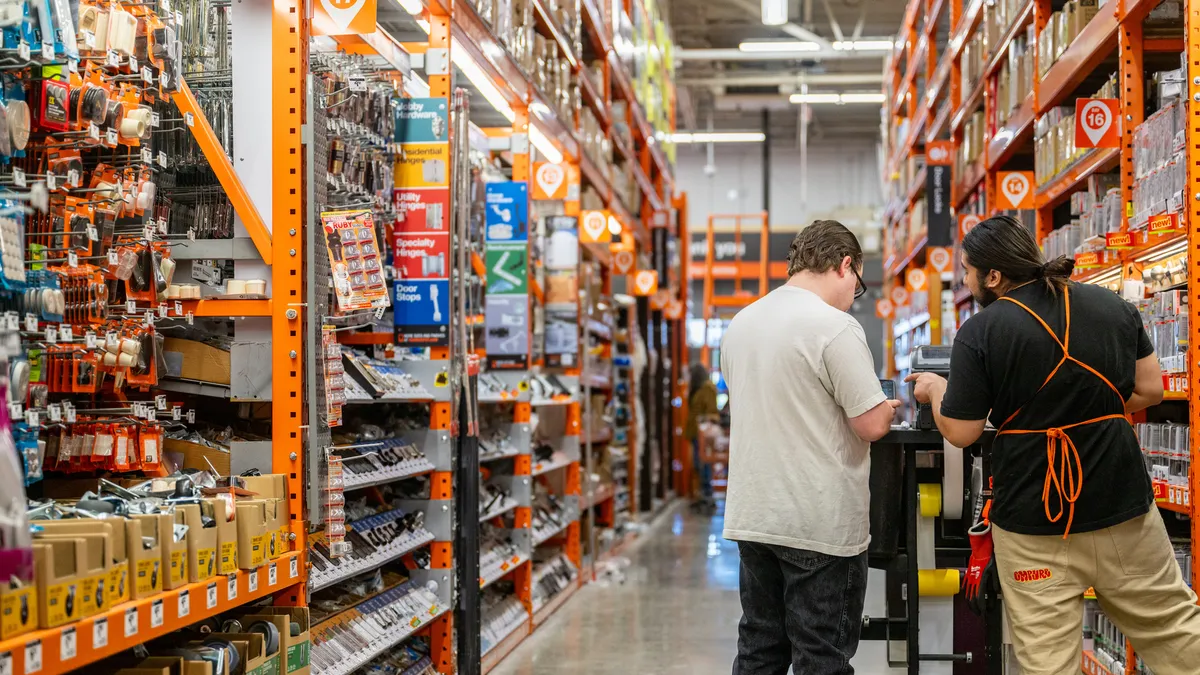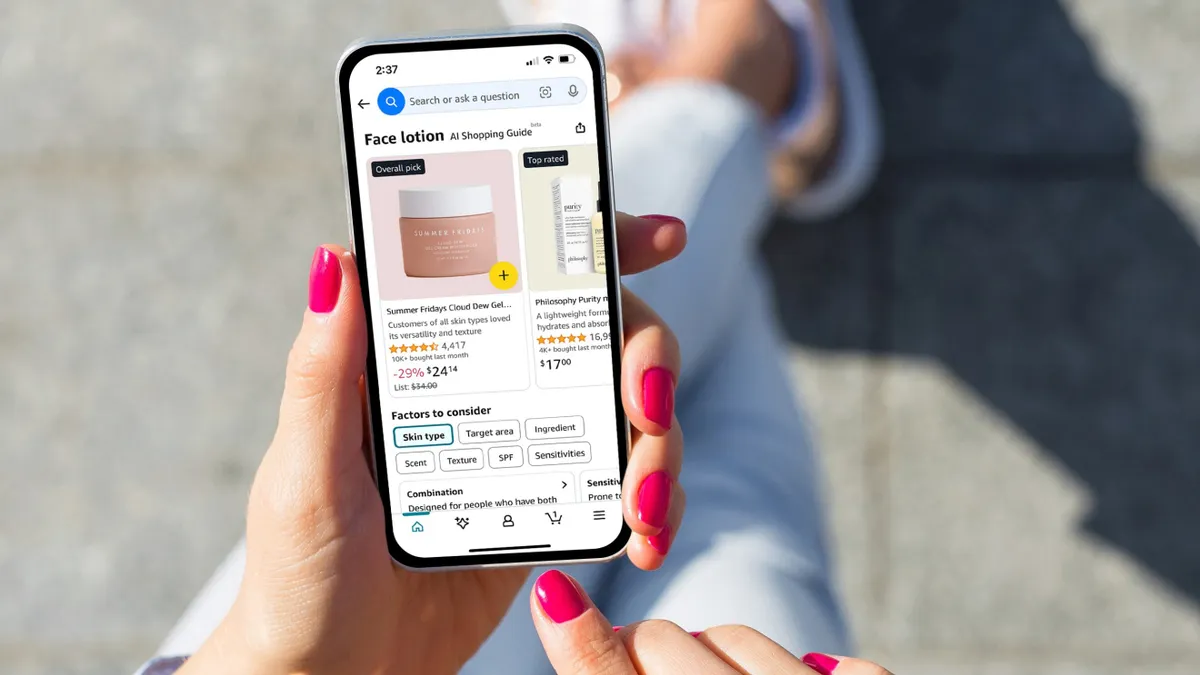As CX leaders look to the year ahead, they face a series of obstacles as old as the practice itself as well as fresh technological challenges.
On the management side, CX teams are working to break out of silos and form partnerships with other departments. But teams are still chasing metrics rather than gathering a holistic picture of CX quality at the detriment of customers and the business itself.
Meanwhile, loyalty is harder to come by, as consumers shop around for the best price. As the threat of tariffs and the expected subsequent inflation loom, leaders will have to work harder to keep customers coming back.
To make matters worse, customers are less likely to provide feedback, making it harder for leaders to understand their preferences.
Technological advancements are helping in some cases. More businesses are deploying generative AI in agent copilots as well as customer-facing chatbots. But with some customers skeptical of generative AI, businesses will have to work to maintain trust.
CX Dive dug into the stories shaping the future of customer experience. Here are the five trends to watch in 2025:
CX teams will struggle to forge partnerships with other departments
Every department has a role to play in creating great experiences, but CX teams often operate in isolated fiefdoms. Even leaders who recognize the importance of collaboration may not have a plan in place to forge those connections.
Only 1 in 5 CX teams will unite with their colleagues in design, research and delivery to improve their overall impact in 2025, according to Rick Parrish, VP and research director in Forrester’s CX practice.
This is in line with a CallMiner survey that found nearly half of CX leaders said there is a lack of communication between departments even though nearly 2 in 5 would like to see organizational leadership use customer experience data to make better decisions.
Efforts to bridge the gap have often called upon other departments coming over to CX teams, but that approach usually falls flat.
"It's been years of standalone CX programs trying to get those people over there to come to you,” Parrish told CX Dive. “And then there have been various attempts to visit them, but that isn't working.”
Leaders need to embed their own “CX champions” within other teams to create effective lines of communication, according to Parrish. These people will work with other departments on a daily basis, but they still report to CX leaders to ensure everyone is on the same page.
Score obsession will continue hindering CX potential
Only 1 in 5 CX teams will make feedback count for the bottom line. Instead, most organizations will continue to chase metrics for their own sake, according to Forrester’s Parrish. Score obsession is embedded in many companies’ cultures, and it can be hard to shake.
“Usually, what happens is the CX leader and maybe a few other people who realize the problem sort of throw their hands up and say, ‘I'm going to try to keep improving things despite this,’” Parrish said.
Better experiences can help companies improve the bottom line, but many teams fail to look beyond easily quantifiable numbers. This makes it hard to get a read on how CX efforts affect customers’ spending habits — which makes it hard to understand how CX can directly benefit the business.
Teams can overcome score obsession by exploring outside CX, according to Mark Abraham, global leader of BCG’s personalization business. Leaders can tie metrics like net promoter score to metrics that measure customer lifetime value to better understand how one affects the other.
“We focus with clients on curating a balanced scorecard and making sure that those few but strategic and complementary measures like sales, satisfaction and engagement can be looked at consistently across the business,” Abraham said.
Loyalty is harder to win
Consumers are reporting better experiences with the companies they frequent, but their loyalty is harder to earn.
“Loyalty is harder to win and easier to lose as we head into 2025,” Isabelle Zdatny, head of thought leadership at Qualtrics XM Institute, told CX Dive. “Generally speaking, what we saw was actually the quality of experiences ticked up a little bit. So we saw higher levels of satisfaction. We saw fewer customers reporting that they had a bad experience with a company.”
As good customer experience becomes the norm, consumer expectations increase across industries, making earning loyalty an uphill battle.
“However, we also saw that customers’ likelihood to recommend, repurchase and trust a company has all decreased over the last year, and when customers do have a bad experience, they are more likely to not just reduce their spending with an organization, but actually just stop spending altogether,” Zdatny said.
In addition to more competition and higher expectations, price is playing its part in making consumers shop around. With President-elect Donald Trump promising tariffs in the year ahead, economists expect inflation to rise, which may cut into loyalty even more.
Qualtrics has already seen the impact of price in its annual trends survey. When asked what the source of their bad experience with a company was, a top issue for consumers was pricing concerns.
“That was a top concern in a number of those discretionary companies,” Zdatny said, pointing to streaming media and supermarkets as examples. “So I think that’s a reflection of inflation.”
Businesses push generative AI consumer-facing chatbots
As companies become more comfortable with generative AI, businesses are looking to employ the technology not just for agents, but for consumers as well.
On the employee side, companies are making a big push to improve or deploy generative AI copilots for contact center agents. Instead of an agent looking at six different apps or multiple screens of information, a generative AI-powered copilot can synthesize all of that information for the agent.
The goal is to take all that context and run it through an LLM to “summarize and digest a high dimensionality of information and suggest what's relevant to the agent or make suggestions for what should go back to a customer,” said Jason Maynard, North America and Asia Pacific CTO of Zendesk.
Though CX experts urge businesses to keep generative AI in the back end to reduce errors in customer service, some businesses are beginning to use the technology directly with customers.
Klarna rolled out an Open AI-powered chatbot last winter, claiming the customer service assistant managed to handle the work of 700 full-time agents during its first month of operation.
“The bigger interest I see from [business] customers is around, how do we drive some full conversational experiences with our end customers that would replicate effectively what our tier 1 support is doing? How do I do that in a way that still feels human and contextual but can be real time?” Maynard said.
Human agents still have an important role, however.
For easy interactions, a generative AI chatbot can support those in a cost-effective way, Maynard said.
“For what gets through, how do I then look at the things that don't fit well into those buckets of full automation for the end customer and give agents the right tools to support those types of interactions?” he said. “You don't want to build a whole bunch of agent tools to support agents taking care of very simple things when they could just be dealing with a chatbot that could do it easier and for a lower cost.”
Customer feedback keeps falling, and not just in surveys
It’s no secret that customer response rates have fallen in recent years.
“Every single year since we started the study in 2021 the percentage of consumers who say that they have given feedback to a company has dropped,” Zdatny said. “It's dropped 8 percentage points total over that time.”
The decline in customer feedback means companies have less information on how they need to improve their customer experience operations or what they’re doing well.
Experts often attribute low levels of customer feedback to survey fatigue, as consumers feel like they’re getting bombarded with requests for feedback.
“A lot of companies don't follow survey methodology best practices,” Zdatny said. “So as consumers, we are getting super long surveys that are often completely irrelevant to our experiences.”
But consumers are also veering away from sharing feedback elsewhere.
“Consumers are staying increasingly silent about their experience,” Zdanty said. “Fewer consumers today say that they post on social media sites, that they wrote online reviews, places that organizations could theoretically go and scrape unsolicited data from. They're not even telling friends and family about their experiences.”
It’s “something companies need to wrestle with and really think about how to evolve to a more kind of holistic and balanced listening strategy that's not as reliant on those traditional VoC surveys because you're not getting that.”
But as important as customer feedback is, acting on it is what makes the difference.
“What I see is the organizations that can collect and understand a lot of customer information, that's great, but the ones that actually have the ability and the capability to act upon it is even better, and that's what makes a difference,” said Jeff Mango, managing director of U.S. customer experience at KPMG.
Companies that show they are listening to customer feedback — or adapting in response — can encourage customers to offer feedback in the future.
“Companies are not taking clear action based on the information that consumers are providing,” Zdatny said. “So why would I as a consumer take my very precious time to give companies feedback? If they're not even going to acknowledge receipt of that feedback, they're not going to make it clear what changes they're making based on my feedback? It feels just like screaming into the abyss.”
And as customer experience quality improves, some consumers would rather just shop elsewhere.
“Why take my time to provide them with feedback when I can just go get a similar product from retailer B?” she said.





















